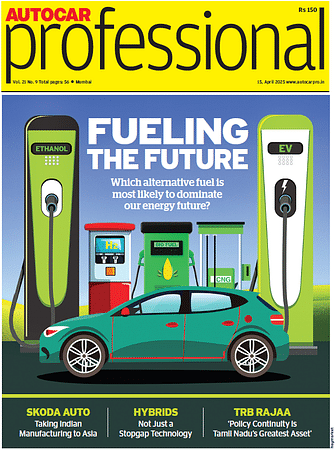Combining gestures and touchscreen enables safer driving
Combination of gesture interaction and touchscreen reduces driver distraction and increases attentiveness while driving, says Continental.
To improve non-verbal communication between drivers and their vehicles, international technology company Continental has devised a range of user-friendly touch gestures for the cockpit.
Thanks to a combination of gesture interaction and touchscreens, drivers can draw specific, defined symbols on the input display to instantly trigger a diverse array of functions and features for rapid access.
“The use of gestures and system control through haptic methods allows drivers to access controls and functions much faster than with conventional control concepts involving buttons and switches. But there is still potential for drivers to get distracted. By combining both elements we can significantly reduce levels of driver distraction compared with the standard method using a touchscreen,” says Dr. Heinz Abel, head of Cross Product Solutions at Continental’s Instrumentation & Driver HMI business unit.
Drivers can enable touch gesture interaction simply by touching the display with two fingers. Additional actions such as activating handwriting mode are not necessary. When touch gesture interaction is enabled, you can, for example, use two fingers to draw a heart symbol to access a favourite contact or a house roof symbol telling the navigation system to drive home. And by drawing a circle, you can turn on the air-conditioning system in your apartment while you are on your way home.
“To ensure that such concepts are accepted, it is important that the gestures used are intuitive and do not have to be specially learned. At the same time, it should be possible to draw the gestures without getting distracted from the task of driving, and the gestures should be easy to remember. Current, in-house user studies prove that we have succeeded on both counts,” says Dr. Abel.
A lab study conducted by Continental showed, among other things, that two-finger gestures can reduce the length of time required to call up the desired features and functions by around one third. Another result was that, compared with one-finger touch gestures, two-finger touch gestures reduced the mental effort involved in operation to around one quarter.
Two-finger touch gestures can be drawn anywhere on the touch-sensitive surface of the input display, with drivers hardly having to avert their eyes from the road; this ensures intuitive and user-friendly operation. At the same time, this concept extends the conventional human–machine dialogue by allowing users to create favorites that can be accessed directly at the first menu level. “Our touch gestures cover the most frequently used functions in vehicle–driver communication, while, quite incidentally, the new approach makes the system much more fun to use as well,” says Dr. Abel, summarising the benefits of this new concept.
RELATED ARTICLES
Isuzu unveils D-Max EV at 2025 Commercial Vehicle Show
Revealed at the 2025 Commercial Vehicle Show in Birmingham, the Isuzu -Max EV is the first fully electric commercial pic...
Hyundai unveils next−gen highly efficient hybrid system
The next-gen hybrid system is claimed to offer 45% better fuel efficiency and 19% more power compared with ICE powertrai...
Horse Powertrain reveals hybrid conversion for electric cars
Engine-making joint venture of Geely and the Renault Group announces new hybrid powertrain that fits into the same space...






 By Autocar Professional Bureau
By Autocar Professional Bureau
 08 Apr 2017
08 Apr 2017
 4078 Views
4078 Views









